Contents
Pagebreaks of the print version
Introduction to Classical Mechanics
Introduction to Classical Mechanics
John Dirk Walecka College of William and Mary, USA
 Published by
Published by World Scientific Publishing Co. Pte. Ltd. 5 Toh Tuck Link, Singapore 596224
USA office: 27 Warren Street, Suite 401-402, Hackensack, NJ 07601
UK office: 57 Shelton Street, Covent Garden, London WC2H 9HE Library of Congress Control Number: 2020005462
British Library Cataloguing-in-Publication Data A catalogue record for this book is available from the British Library.
INTRODUCTION TO CLASSICAL MECHANICS Copyright 2020 by World Scientific Publishing Co. Ltd.
All rights reserved. All rights reserved.
This book, or parts thereof, may not be reproduced in any form or by any means, electronic or mechanical, including photocopying, recording or any information storage and retrieval system now known or to be invented, without written permission from the publisher. For photocopying of material in this volume, please pay a copying fee through the Copyright Clearance Center, Inc., 222 Rosewood Drive, Danvers, MA 01923, USA. In this case permission to photocopy is not required from the publisher. ISBN 978-981-121-743-2
ISBN 978-981-121-823-1 (pbk) For any available supplementary material, please visit
https://www.worldscientific.com/worldscibooks/10.1142/11750#t=suppl Printed in Singapore
For Kay
Preface
The author recently published a book entitled
Introduction to Electricity and Magnetism [Walecka (2018)]. It is based on an introductory course taught several years ago at Stanford, with over 400 students enrolled. The only requirements were an elementary knowledge of calculus and familiarity with vectors and Newtons laws; the development was otherwise self-contained.
The lectures, although relatively concise, take one from Coulombs law to Maxwells equations and special relativity in a lucid and logical fashion. The book has an extensive set of accessible problems that enhances and extends the coverage. As an aid to teaching and learning, the solutions to those problems were subsequently published in a separate text [Walecka (2019)]. Although never presented in an actual course, it occurred to the author that it would be fun to compose an equivalent set of lectures, aimed at the very best students, that would serve as a prequel to that Electricity and Magnetism text. These lectures would assume a good, concurrent, course in calculus and familiarity with basic concepts in physics (say, from a good high-school course); they would otherwise, again, be self-contained. For my own amusement, I did just that.
The lectures start with a review of the necessary mathematics and a review of vectors. The idea of an inertial frame is then introduced, and Newtons laws are stated, with several applications included. The concepts of energy and angular momentum are introduced, and the analysis is then extended to many-particle systems. The notions of generalized coordinates and Lagranges equations are first introduced on the basis that they reproduce Newtons laws in the chosen examples. After a lecture introducing the calculus of variations, Lagranges equations are derived from what then serves as the basic principle of classical mechanics Hamiltons principle of stationary action. Several more examples are given of lagrangian mechanics.
Hamiltons equations are similarly first introduced on the basis that they reproduce Lagranges equations and Newtons laws for the chosen examples, and they are then subsequently similarly derived from Hamiltons principle of stationary action. Several examples are included of hamiltonian mechanics and phase space. A lecture then discusses the transition from the mechanics of discrete particle systems to that of continuous media. Lagranges equations for continuous systems are exhibited and then derived from Hamiltons principle. The wave motion of a string under tension serves as the paradigm for continuum mechanics, and the analysis extends up through the construction of the energy-momentum tensor and the reflection and radiation of those waves. Irrotational, isentropic fluid flow, where the velocity field is derived from a potential and there is no internal (reversible) heat flow, serves as the final example of lagrangian continuum mechanics.
The lagrangian density is constructed. Bernoullis equation and the continuity equation for the mass (number) density are then derived from Lagranges equations, and they are related back to Newtons laws for fluid mechanics. The energy density and energy flux are constructed, and the analysis is then applied to sound waves, where reflection and radiation are again examined. The goal of this text is to provide a clear and concise set of lectures that take one from the introduction and application of Newtons laws up to Hamiltons principle and the lagrangian mechanics of continuous systems. This, indeed, provides the point of departure from classical mechanics to modern quantum field theory. An extensive set of accessible problems again enhances and extends the coverage.
Now readers may feel that this is an overly ambitious goal for a set of introductory lectures on classical mechanics, and it is hard to argue with that. I did not feel the goals were too ambitious in the case of the Electricity and Magnetism text. It may be that the current lectures are only relevant to a more advanced honors course. Nevertheless, after completing this text and reading it over several times, I am convinced that the whole thing fits together well, and the book serves as a useful text for good students. I do also believe that the current book provides a good introduction to the more advanced mechanics texts, such as [Fetter and Walecka (2003)]. (2011)], etc. (2011)], etc.
I am therefore submitting the present manuscript for publication. It is my hope that students and teachers alike will share some of the pleasure I took in writing this book. I would like to once again thank my editor, Ms. Lakshmi Narayanan, for her help and support on this project. Williamsburg, Virginia
November 4, 2019John Dirk Walecka
Governors Distinguished CEBAF
Professor of Physics, emeritus
College of William and Mary _______________________________ See, for example, [Walecka (2010)].
Contents
Chapter 1
Introduction
The author recently published a book entitled
Introduction to Electricity and Magnetism based on a one-quarter, calculus-based course he taught at Stanford some years ago [Walecka (2018)].
It is assumed that the reader has taken a good high-school physics course and is familiar with the basics concepts of units, measurements, vectors, etc. It is also assumed that he or she has taken, or is taking, a good course on calculus.
1.1Physics
We again start with some comments on
physics. Physics provides a way of looking at the world. We describe physical phenomena in mathematical terms with the goal of Correlating phenomena Predicting new phenomena The description is tested with
experiment. Physics is an
experimental science.
The payoff is that The description is either correct or incorrect The correct results are universal The goal is to develop a physical law, presented as a mathematical relation, usually (but not always) a statement on the instantaneous development of a system, and then derive, and test, the mathematical consequences of that law. The two towering geniuses of physics are Newton and Einstein Newton, who invented calculus to implement his second law, and Einstein, who realized our concepts of space and time depend on how fast one is moving and on any nearby mass. We start our discussion with homage to Newton, and give a brief review of the elements of calculus that we will need for our

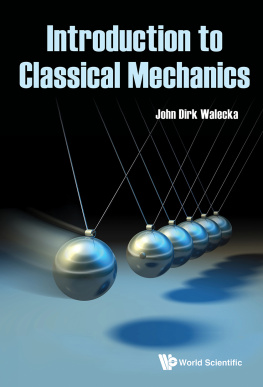
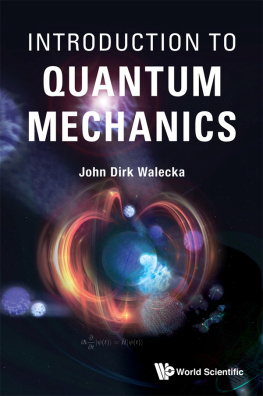
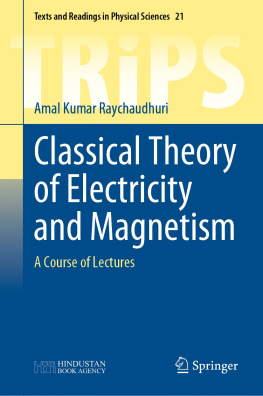
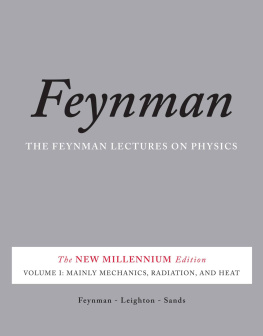
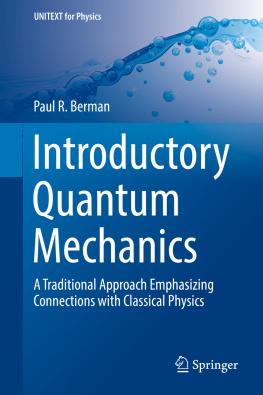
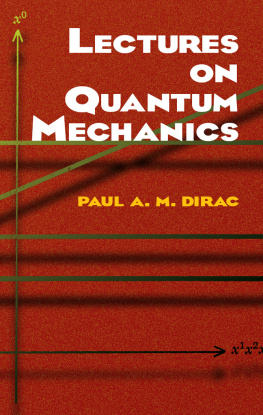
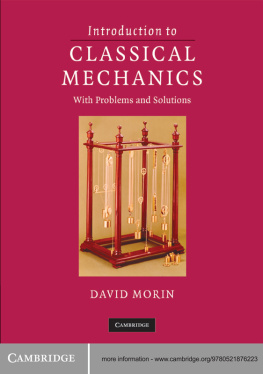

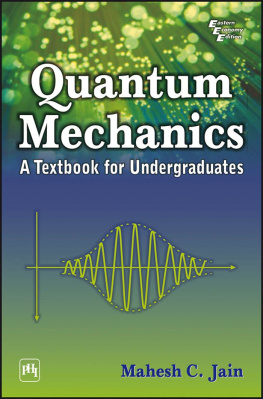
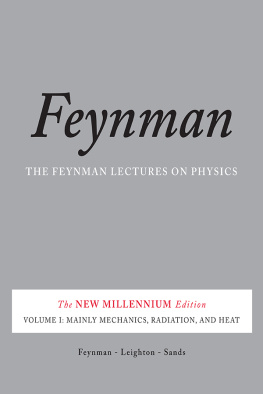
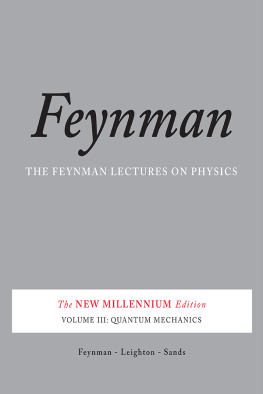
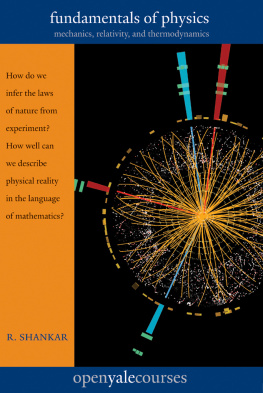


 Published by World Scientific Publishing Co. Pte. Ltd. 5 Toh Tuck Link, Singapore 596224 USA office: 27 Warren Street, Suite 401-402, Hackensack, NJ 07601 UK office: 57 Shelton Street, Covent Garden, London WC2H 9HE Library of Congress Control Number: 2020005462 British Library Cataloguing-in-Publication Data A catalogue record for this book is available from the British Library. INTRODUCTION TO CLASSICAL MECHANICS Copyright 2020 by World Scientific Publishing Co. Ltd. All rights reserved. All rights reserved.
Published by World Scientific Publishing Co. Pte. Ltd. 5 Toh Tuck Link, Singapore 596224 USA office: 27 Warren Street, Suite 401-402, Hackensack, NJ 07601 UK office: 57 Shelton Street, Covent Garden, London WC2H 9HE Library of Congress Control Number: 2020005462 British Library Cataloguing-in-Publication Data A catalogue record for this book is available from the British Library. INTRODUCTION TO CLASSICAL MECHANICS Copyright 2020 by World Scientific Publishing Co. Ltd. All rights reserved. All rights reserved.